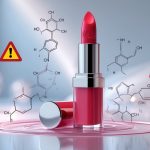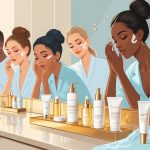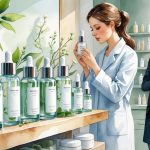Moisturizer Brands Making Big Promises Dermatologists Now Question
Addressing Skin Concerns: Do Moisturizers Deliver?
I keep slapping hyaluronic acid on my face and hoping for a miracle, but dermatologists always say, “it’s complicated.” Every jar promises plump, wrinkle-free, all-day hydration, but my bathroom shelf is basically a graveyard of broken dreams.
Fine Lines, Wrinkles, and Anti-Aging Claims
Wrinkles just show up, like, “surprise!” And every moisturizer claims to erase them. Usually, it’s just a temporary plumping thing—honestly, I once watched a serum demo and all I got was a shiny forehead. Dermatologists say moisturizers mostly hydrate the top layer, maybe smooth things out a bit, but “anti-aging” is a stretch (checked the Journal of Cosmetic Dermatology, still underwhelmed).
Retinol or peptides might help with collagen if you’re patient (like, months), but I’ve definitely burned myself chasing those “proven” results. If your jar says “clinically proven” and flashes a percentage, do yourself a favor and look up the study. It’s probably from a two-week brand-funded trial. No moisturizer erases wrinkles already there, it just makes them look less obvious by puffing up the top layer.
Watched a friend drop $120 on a “firming” cream—she wanted miracles, got a little moisture, didn’t get younger. SPF 30 is the only thing every dermatologist agrees on, but don’t expect time travel from a cream.
Skin Barrier Support and Hydration
Once, I was slathering moisturizer at 2 a.m. after a flight and my skin still felt like sandpaper. “Supports the skin barrier” isn’t total nonsense, but you have to cut through all the fluff. Dermatologists say ceramides and glycerin actually help lock in water—that’s real. I saw a PubMed study backing this up, but only if the moisturizer skips the usual irritants.
Humectants and occlusives are lifesavers for dry skin. I keep a cheap drugstore emollient in my glovebox, not kidding. The annoying part? Tons of “best sellers” still use allergens—so much for “barrier support.” One study found only a few popular moisturizers actually avoid harsh stuff (PMC). If you’ve got eczema or super-dry skin, ignore “calming botanicals” unless there’s evidence, and just go with the boring, dermatologist-approved classics.
Sometimes I wonder if I should just dunk my face in petrolatum and call it a day—way less stressful than decoding “probiotic peptides” and “silk protein infusion” on a label.
Moisturizer Forms and Textures Explained
Drugstore aisles are a nightmare—tubs, tubes, jars everywhere. Creams next to gels, and no real instructions unless you want to binge 14 hours of YouTube hauls. “Ultra hydration” creams feel like glue, “gel” moisturizers vanish before your skin even notices.
Creams vs. Gels: Lightweight Options
Every dermatologist I ask about gels versus creams gives a different answer. Gels—like Neutrogena Hydro Boost or those Korean brands—are mostly water and humectants (hyaluronic acid, glycerin, whatever’s trendy), barely any oil. That’s why they disappear on oily or combo skin and don’t mess with your sunscreen. Nobody warns you how much that matters.
Creams? They’re packed with oils, emollients (cetyl alcohol, dimethicone—read the back, they’re always there), and occlusives. Richer, heavier, usually labeled “face moisturizer” or “nourishing.” Some dermatologists say even dry skin can break out with thick creams, but it depends on the formula, not just the texture. Moisturizers work because they blend humectants, emollients, and occlusives in different ratios; it’s chemistry, not just marketing. Gels trick you into thinking you’re not wearing moisturizer when you are. My cousin swears creams always clog pores, but honestly, the science is kind of all over the place. Short version: gels are featherweight, creams stick around. That’s it.
Night Creams, Facial Moisturizers, and Specialty Products
Nobody ever tells you this, but “night cream” is just a label—no rules, no government agency checking what makes it “night.” I swear, half the time, the only difference is it’s thicker and you’re supposed to use more of it. I’ve got a graveyard of these little jars in my bathroom. I keep falling for the hype, and for what? Most “day” moisturizers are lighter, sometimes with SPF, sometimes with random “antioxidants” (which, honestly, I’m not sure do anything except make me feel like I’m doing something healthy). I counted five that bragged about “pollution protection.” Not sure if anyone’s skin has ever actually been protected from pollution by a cream, but whatever.
Night creams—they love to pile in occlusives like petrolatum or shea butter, and sometimes retinol or acids, because those would just mess with your sunscreen or turn your face into a tomato if you used them in the morning. I once asked a dermatologist if you really needed a “night” cream. He just laughed and said, “Use a thicker moisturizer or retinol at night. Done.” That’s it. These “specialty” creams? Usually just trend-chasing with actives, half of which are probably useless. TikTok keeps screaming about “barrier repair” creams with ceramides and peptides, but nobody agrees if you’re supposed to slather them on daily or just when your skin’s freaking out.
Nothing makes sense. Price, ingredients, copy—total chaos. Creams, lotions, pressed balms—any of them can be “night” or “rich.” I’ve used the same moisturizer for day and night, and my skin didn’t notice. But somehow, every January, I run out of everything at once, like my face is eating the jars.
Common Irritants and Ingredients to Avoid
Did a patch test once, used half a tube, and my chin looked like I’d lost a fight with a cheese grater. “Dermatologist recommended”? Sure, but that label means nothing to me now. Ingredients with names I can’t pronounce pop up everywhere, and brands love to say “fragrance-free” like it’s a badge of honor, but my skin still gets that weird sticky feeling for days.
Fragrances, Sulfates, and Parabens
Last summer, I was desperate and tried an argan oil cream. Big mistake. Fragrances are in everything, and all they ever do for me is sting and peel my cheeks. Dr. Dennis Gross pointed out that stuff like oxybenzone from sunscreens can end up in your bloodstream at ridiculous levels—like, 100 times higher than “safe”. Yikes.
Parabens? They’re preservatives, but then you see studies about hormone disruption and you start to wonder. Sulfates in face washes—people argue about whether they’re really that drying, but my face feels tight and burns after foaming gels with sodium lauryl sulfate. Maybe I’m just sensitive. Or maybe we shouldn’t be using stuff meant for cleaning floors on our faces.
“Fragrance-free” on the box? Double-check. Usually just means “no obvious perfume,” not “no weird chemicals hiding in the ingredient list.” Dermatologists keep warning about allergic contact dermatitis, and my forehead’s been the test subject. Even the “gentle” brands can burn.
Silicones and Pore-Clogging Ingredients
Why do creams sneak in silicones with names like cyclopentasiloxane or dimethicone? They promise “smoothness” and “blurred pores,” but after a few days, my skin just gets bumpy and angry. This guide lays it out, but brands keep selling the “velvety finish” dream. I don’t buy it anymore.
I want to trust “noncomedogenic” claims, but then I see isopropyl myristate or coconut oil in the ingredients. That stuff clogs my pores every time. “Noncomedogenic” isn’t regulated in the US. It’s basically a pinky promise. I even keep a spreadsheet of breakout triggers. Is that obsessive? Maybe. But it’s the only way I keep track of what’s actually making my skin worse.
Some people say silicones help protect your skin barrier. My cystic acne after a “lifting cream” says otherwise. Do they even test these formulas on real faces, or just hope we won’t notice the breakouts?
Noncomedogenic and Oil-Free Formulas
I’ve lost count of how many “oil-free” creams promised clear skin, but then I’m blotting my forehead halfway through the day anyway. Here’s what gets me: “oil-free” doesn’t mean “won’t clog pores.” Squalane, butyl stearate—they’re not technically oils, but they still break me out. Shopping for truly noncomedogenic stuff feels impossible. It’s like ingredient bingo, except you never win.
Dr. Kristin M. Baird once told me, “alcohol can dry out your skin more than you’d expect.” But so many oil-free creams have drying alcohols anyway, just to make your face feel matte (proof here). Who decided that was a good idea? And “noncomedogenic” on the label? Marketing, not science.
After years of trial and error, I mostly stick to fragrance-free, simple formulas with ceramides and humectants. Still, my friend’s “non-comedogenic, oil-free” cream gave her the worst breakout she’s had in years. These buzzwords are basically just that—buzz.



